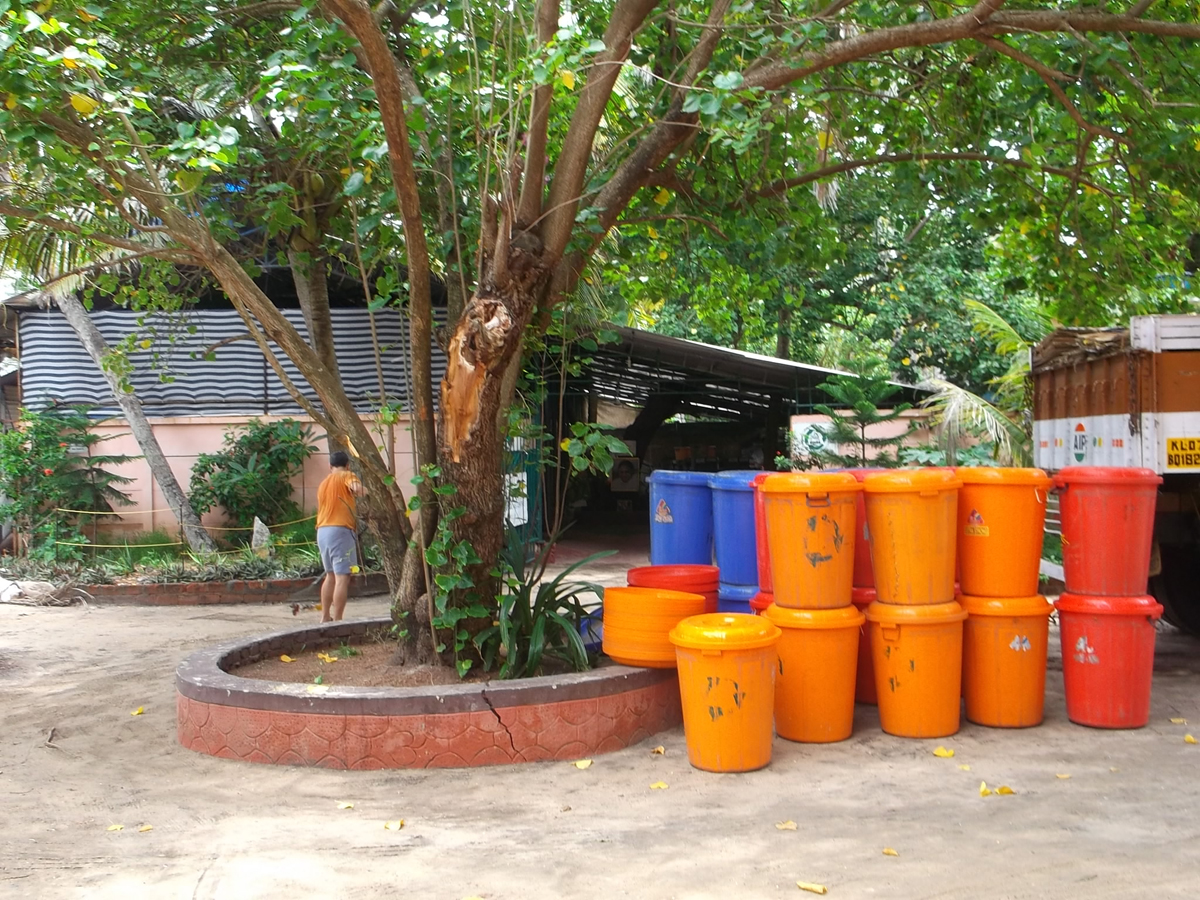Economic dynamics in small communities
I’m going to take a break from my series of posts about working on the tea farm to touch on a more or less unrelated topic–economics. I’m currently writing a paper about some economics observations I’ve made regarding the ashram community I’m living in. I’d like to briefly toss some of my musings your way.
I’m going to begin with some data that I find very interesting: in the Amritapuri ashram where I’m staying, the entire system (food, administration, waste management, etc.) is run almost completely by volunteers. The ashram contains up to 2000 long-term residents and up to 3000 transient visitors at any given time. None of these volunteers are required to carry out these duties; if any given resident decides to be lazy and not show up to volunteer, the are few or no official repercussions, and the individual is certainly not asked to leave the ashram. Yet an inquiry into the ashram record books indicated that around 90% of residents show up to their daily ashram volunteer jobs (it follows 10% don’t).
From a simplistic classical economic standpoint that regards people and institutions as utility maximizing units, and wealth as an effective measure of utility, the absence rate should be 100% and the ashram should be in a state of inoperation. A more savvy model might theorize that people don’t just care about money–they care about the opinions of their peers too. In order to maximize utility, individuals will perform work responsibilities in order to attract the esteem and avert the disdain of others.
From my casual observations though, it seems unlikely this is really how things are working around the ashram. For one, volunteers are usually divided into small groups that only rarely directly interact with other groups. I mentioned in an earlier post how the ecovillage farm is divided into many plots of land scattered through Vallikavu; on the ~1 acre plot of tea farm that I’ve been working on lately, I work with only 4 other volunteers. If I suddenly stopped showing up to work, only those four people would know, and my social life in india would continue unfazed (and I doubt even my four coworkers would be very bothered anyhow).
Here’s another candidate explanation: In biological systems involving groups, game theory appears to often be a force governing action and cooperation. For instance, families (human or otherwise) often exist as units where the individual members consistently sacrifice their immediate best interest for the best interest of the group as a whole. This type of situation is sometimes modeled as a game theoretic equilibrium, where the members involved can monitor other individuals and send signals (such as insubordination or laziness) if some group members are slacking on their duties.
Selfishness remains dormant as an obstacle to cooperation–until the size of the group expands. As the number of members in a group increases, individuals’ ability to monitor and send signals to a significant portion of the group decrease very quickly, the equilibrium falls apart, and the group falls back into chaos. This type of analysis would explain why families can function well on the principle “from each according to his (or her) ability, to each according to his (or her) need”, but communist nations tend suffer severely from a lack of incentivization when they adopt the same principle.
So even in a group the size of Amritapuri, it seems unlikely that game theoretic explanations lie at the heart of the incredible cooperation I see between volunteers.
I think the most sensible way to analyze the situation is to model individuals as having not one but two utility curves–one for themselves and one for others. I believe individuals are naturally altruistic, that our mind itself is predisposed to act in other’s best interest, as well as our own best interest. Amritapuri can work, simply because humans are wired in such a way that they try to make it work–not just for selfish reasons, but for the good of everybody involved.
Now, if we’re going to model individuals as having both selfish and altruistic utilities, we’ll also have to admit that not all utility curve frontiers are created with equal circumferences–some extend not just to peers but to all humans or even all beings in the whole universe, while others seem to require a magnifying glass to be seen with the naked eye. Certainly recent research in psychology has indicated altruism and empathy are traits that can be cultivated through practice. Amritapuri probably functions as well as it does because it contains a high percentage of individuals who devote a lot of their life to expanding the reaches of their altruistic aspirations. I doubt the volunteer system would perform so well in say, an inner city in the US (although who knows!).
Anyway, I think as an economist the moral I’m going to take away from this experience is that traditional economic analysis can sometimes be too quick to explain human economic activity in terms of complex models, like game theory, when in reality the simplest and most obvious explanation is that many activities are undertaken with the interests of others in mind–not all human actions originate purely from self-centered aims.
More from this Author
Ready to Travel?
Are you curious and ready to dream big? Do you desire to challenge yourself and make a meaningful difference? Become a Lumos Traveler - let’s get you started!



